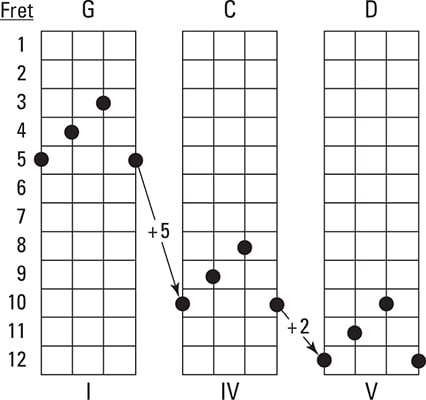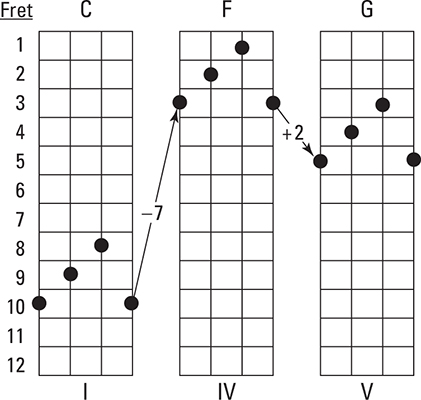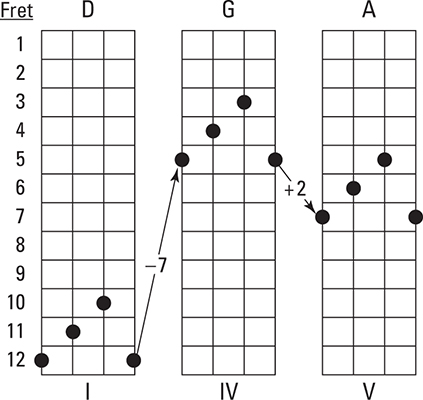Melodic and single-string banjo techniques offer alternative ways to play based around scales. These ways of playing are used increasingly in progressive bluegrass banjo styles.
Trying out a G-major scale using both techniques reveals the difference in these approaches.
Finally, when playing with others, you’ll need to support other musicians with backup techniques. A key to playing great banjo accompaniment is knowing your movable up-the-neck chord shapes, beginning with the F-shape chords.
Picking-hand bluegrass roll patterns
Bluegrass banjo is characterized by a hard-driving, forceful picking-hand approach. Developing good timing is essential to great playing, and you’ll want to practice these rolls slowly at first, keeping a steady rhythm. As you encounter new songs, take note of the many ways that roll patterns are used to capture melodies.
Forward-reverse roll

Alternating thumb roll

Forward roll

Lick roll

Foggy Mountain roll

Backward roll

Middle leading/Osborne roll

Index leading roll

Melodic and single-string techniques
In melodic-style banjo, you play scales by striking consecutive notes on different strings. With single-string style, you pick the same string consecutively, usually with an alternation of the thumb and index fingers.
Melodic G-major scale

Single-string G-major scale

Movable F-shape chord positions in the keys of G, C, and D
The chord progressions for many bluegrass songs are made up of the chords built upon the first, fourth, and fifth notes of the major scale of the key of the song. Internalizing the I–IV–V chord positions using the F chord shape prepares you for playing great bluegrass banjo backup with fretting and vamping techniques.
Key of G: G, C, and D chords

Key of C: C, F, and G chords

Key of D: D, G, and A chords

